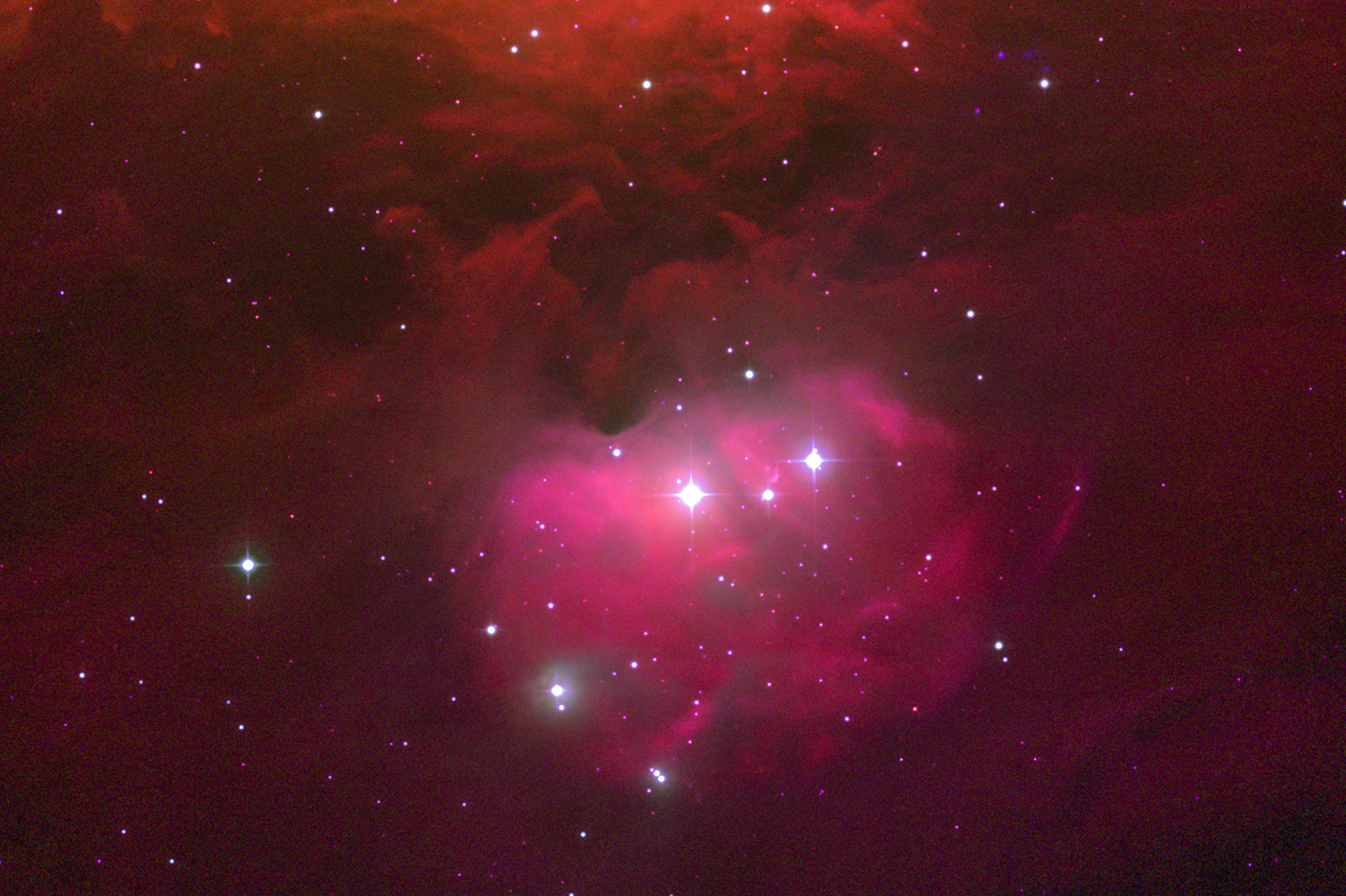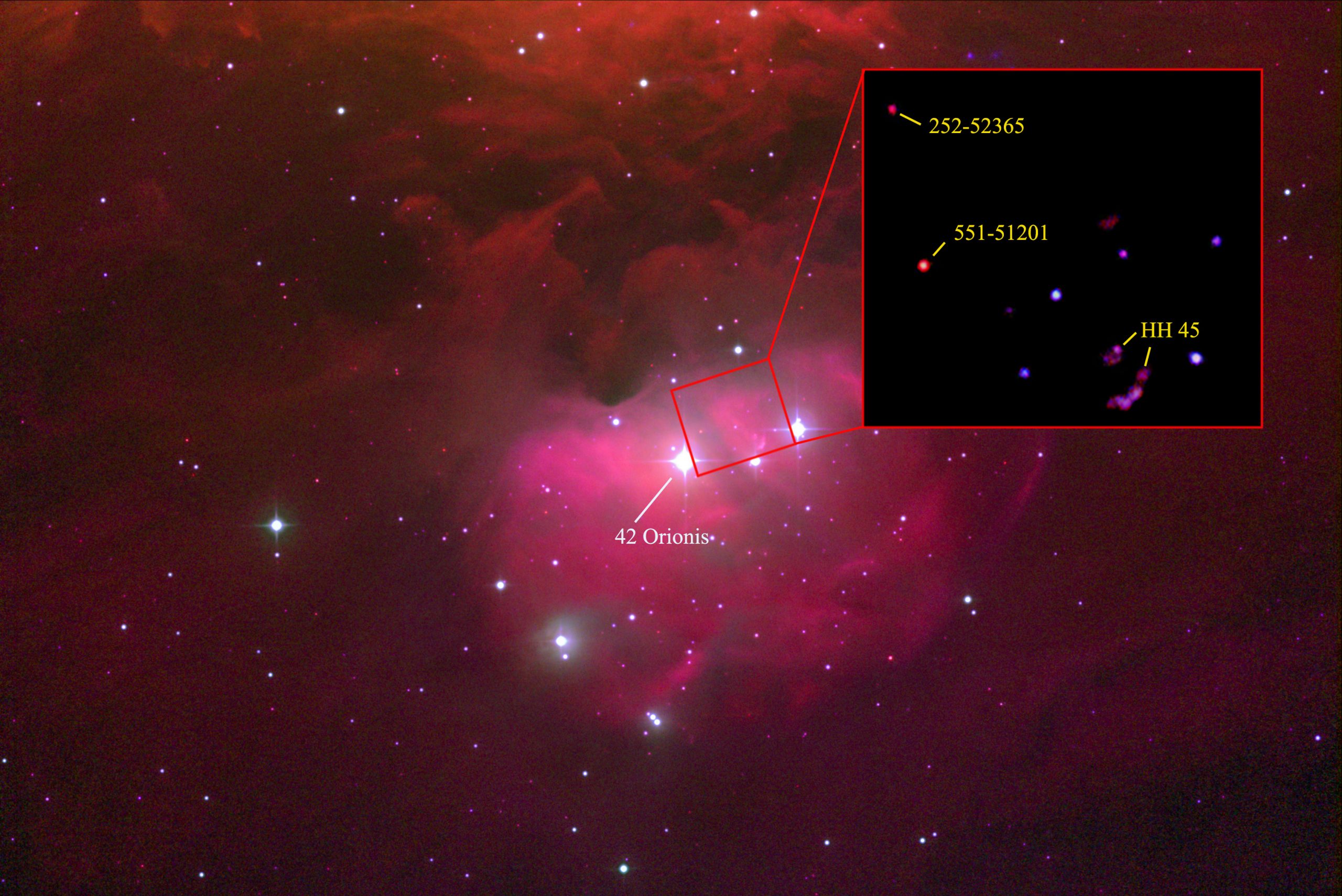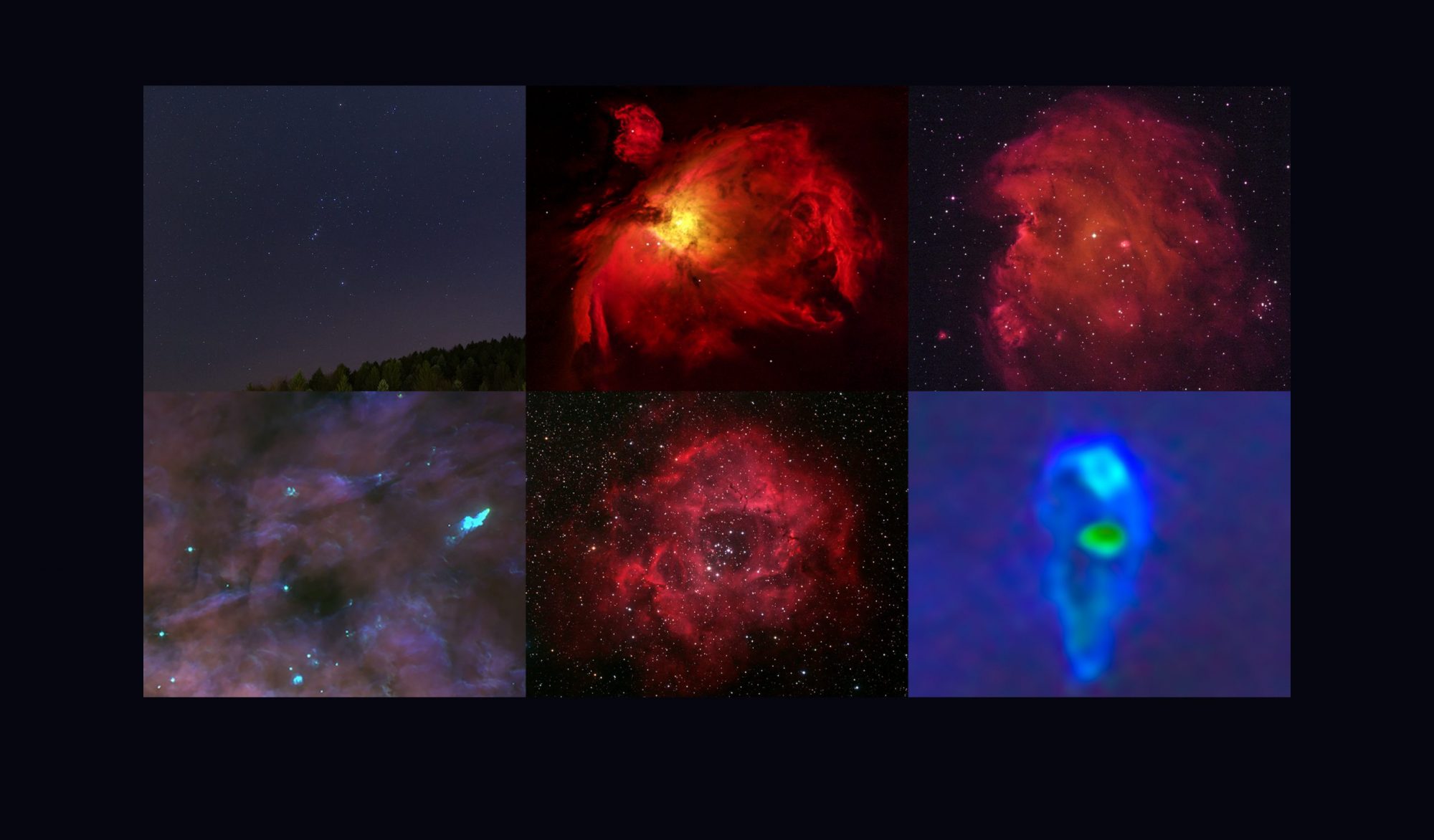

The Running Man Nebula (SH2-279) in Narrow-band observations (Planewave 17in CDK, FLI-PL6303E). RGB picture of 73 stacked 300 second exposures in Halpha, OIII and SII Narrow-band filters.
The Running Man Nebula (SH2-279 in the Sharpless catalog, NGC 1977) is a bright reflection nebula just north of the Orion Nebula. In photographic pictures it shows a blue color due to reflected star light. It is however also an emission nebula/HII-region where the B-type star 42 Orionis is ionizing the surrounding interstellar gas. This results in red Halpha emission. The Running Man Nebula has approximately the same age and distance to earth as the Orion Nebula and is also part of the Orion Giant Molecular Cloud A.
Emission nebula like SH2-279 emit most of the visible light in well-defined emission lines. They are therefore ideal targets for Narrow-band observations. In Narrow-band observations special filters are used which only transmit the light of a single spectral line. Pictures made with a Narrow-band filter are black and white pictures. To get a color (RGB) picture, one has to combine three pictures made with different filters. The above color picture was made with three Narrow-band filters for the Halpha (red), doubly ionized oxygen OIII (green) and singly ionized sulphur SII (blue) emission lines using a remote telescope (T21) from the iTelescope network in New Mexico/USA.
Somewhat east of 42 Orionis an extended, arc like structure called HH 45 can be identified. This structure is a Herbig-Haro object (named after the two astronomers George Herbig and Guillermo Haro). Herbig-Haro objects are bright spots inside star froming regions and can be observed with smaller telescopes. They are typically related with jets or gas ejected from nearby young stars. In the case of HH45 the young star has not yet been identified. This young star ejects gas which moves supersonically through the ambient medium. The gas is also irradiated by the ionizing radiation coming from the nearby B-type star 42 Orionis. This results in the purple color of HH45 because it emits Halpha (red color in the picture) and SII (blue color in the picture) photons.
The Hubble Space Telescope detected six proplyds in the HH45 region (see the proplyd section for the definition of proplyds). Four of these six proplyds cannot be seen in the picture made with the amateur instrument. However, the two largest proplyds named 252-52365 and 551-51201 ( the naming is based on the coordinates in right ascension and declination) can be observed. In contrast to the Hubble Space Telescope observations they can however not be spatially resolved. Instead they are point like, red objects showing strong Halpha emission and no or only weak SII and OIII emission. The normal stars, which are also visible in SII and OIII, have a white/blue or white/purple color.
Looking for point like strong Halpha sources, showing only weak or no SII and OIII emission, would therefore be a simple search strategy for proplyd candidates in the vincinity to young B-type stars. There are other red Halpha objects in the proximity of 42 Orionis and some of them may be proplyds, too.
